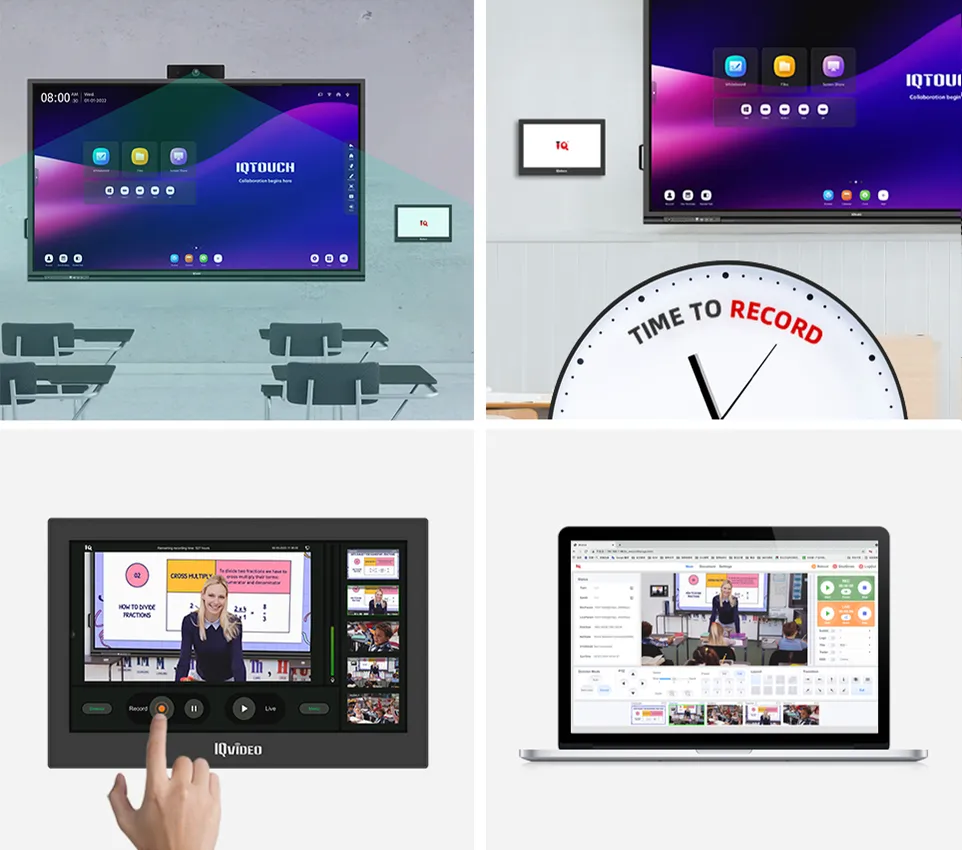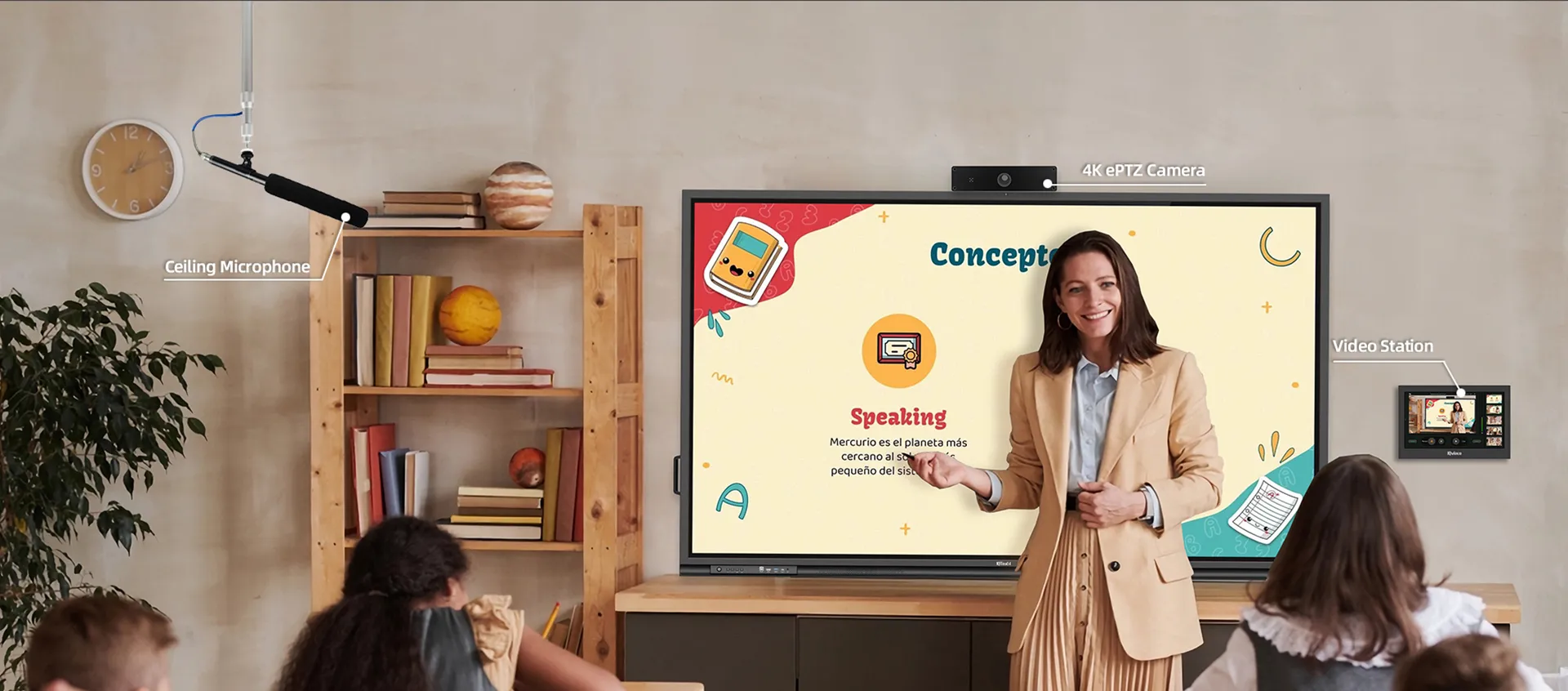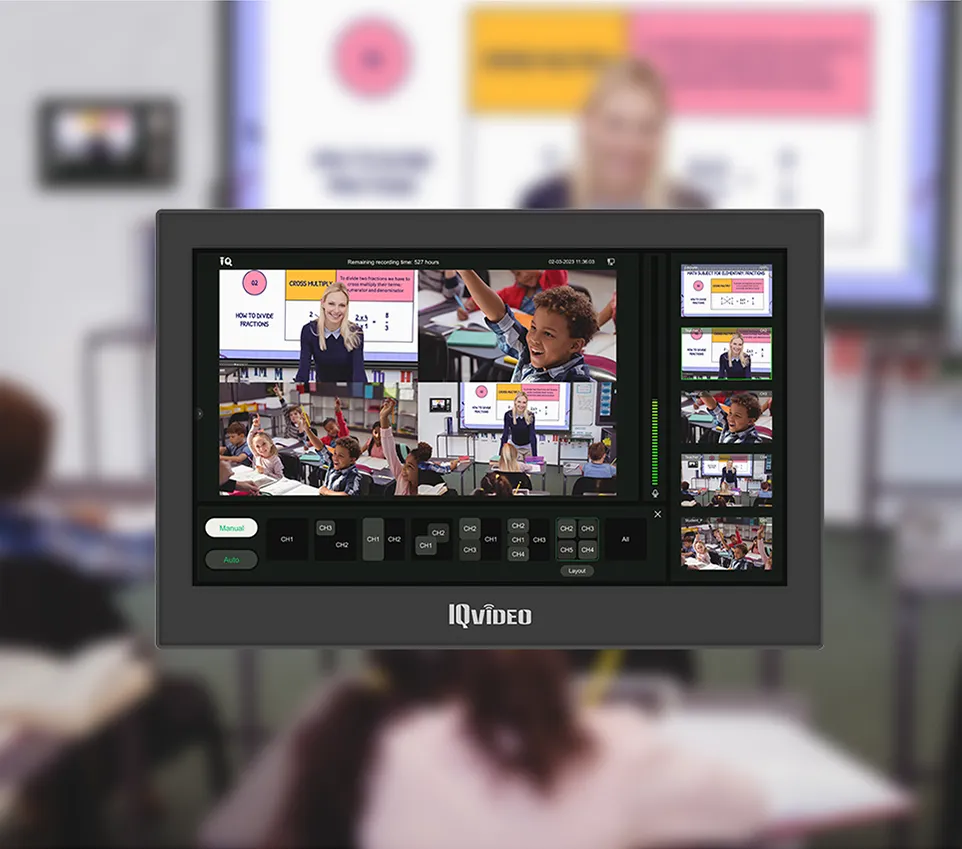Using technical tools to record the classroom has been booming in higher education. Academic interest in the subject is also on the rise. According to Stokel-Walker, the expansion and application of digital technology in curriculum design have made significant progress. From the perspective of space application, the Lecture Capture System is one of the core components of intelligent education solutions, and it is applied more and more widely in the global education scene. Therefore, it is necessary to take a more comprehensive look at the powerful Lecture Capture system. In this article, we'll look at 14 questions about the Lecture Capture System to get a clear picture.
Lecture Capture System like this is a technology that records and captures audio, video, and presentation materials during a Lecture or presentation and plays or distributes them on a specific platform through a special streaming Media Transfer Protocol. The powerful capabilities of the Lecture Capture System have proven to be very effective in optimizing the educational journey of all learners, as demonstrated by extensive practical teaching experience and a comparative study of student learning feedback, because it provides students with the opportunity and possibility to review their work outside the classroom in time and space, in the form of a combination of sound and picture, this approach is a valuable tool for enhancing the overall learning experience of all students.

The essential components of a Lecture Capture System are typically cameras for image capture, microphone for voice pick up, external courseware pickup, for the hardware part, and course recording and live streaming for the software part. For example, the intelligent IQVideo Lecture Capture System LCS710 consists of a video station to control recording and directing, two 4K ePTZ cameras to capture images, and a ceiling microphone for clear audio to record complete and precise course content.
Most people prefer a simple operation, and a simple and easy operation process is beneficial in improving the user experience. The intelligent IQVIDEO Lecture Capture System LCS710 also provides a convenient start-up recording operation. In this way, teachers do not need to spend more time and energy on non-essential recording procedures for research. Teachers can start recording lessons with a single click because the system automatically handles camera close-ups and transitions. This saves teachers' energy and allows them to focus more on what they are teaching and how to make a point more clearly and easily understood.
The Lecture Capture System is an excellent tool for teachers who work hard to prepare their lessons and improve their students' academic performance, as well as for students who are expected to work hard to realize their potential and improve their academic performance through the Lecture Capture System, the school's hot lecturers can deliver public lectures in real-time in all classrooms, overcoming the constraints of traditional classroom space. In addition, the course can be recorded and replayed for students to review and study at any time. We've covered the benefits of the Lecture Capture System in previous articles, and you can explore its power here.
Powerful IQVideo Portable Lecture Capture System LCS910 is one of the best practices examples of Lecture Capture Systems. It features up to 20x optical and 10x digital zoom lenses, high-speed and accurate pan positioning, stable wireless transmission, and a built-in 1/2.8-inch high-definition CMOS sensor, bringing you up to 1080P FHD HD quality. High-quality video performance and the construction of the ultimate lecture studio, no matter which part of the image you want to zoom in on, even if the subject is far away, can still be viewed.
Many lecture capture systems can integrate with learning management systems, video platforms, and other educational technologies to provide a seamless experience for teachers and students.
The Lecture Capture System works with different types of cameras, including webcams, PTZ (Pan Tilt Zoom), and document cameras. Depending on the camera and system requirements, they can be connected to the system using USB, HDMI, or Ethernet cables.
Lecture Capture System typically supports capturing screen content and audio from a computer or laptop. This connection is generally made using an HDMI or VGA cable that connects the computer's video output to the system.
Various microphone options, such as hand-held, collar-clip, and interface microphones, are compatible with the lecture capture system. These microphones can be connected to the system using an XLR digital audio cable, USB, or 3.5 mm audio cable.
Lecture capture systems can capture various types of content, including audio, video, presentation slides, Whiteboard comments, and screenshots. The AV switching function of Q-NEX NMP can output multiple source courseware to a video station to ensure the richness and diversity of teaching content. Teachers can switch to the physical demonstration station or wireless demonstration equipment in the demonstration and explanation, and students can share more teaching resources. Create an immersive teaching atmosphere.
The advanced lecture capture system allows students to watch recorded lectures at a time and place of their choice, allowing them to study at their own pace and in their own time. They can revisit and understand a particular topic or concept when needed, helping to deepen their understanding and memory of knowledge. They can focus on what interests them or is challenging to understand and skip what they already know. This personalized learning experience helps to improve the learning effect and motivation.

Students can view the Lecture Capture System recordings in a variety of ways. For example, in a learning management system, an online learning platform, or a video-sharing platform, schools or educational institutions sometimes upload recorded content to video-sharing platforms, such as YouTube and Vimeo. Students can watch the recordings on these platforms by sharing links or embedding code. For example, the IQVIDEO Lecture Capture System LCS710 System is compatible with the RTMP/RTMPS streaming protocol. With a single click, teachers can quickly build blended or flipped classrooms that can be delivered to YouTube and Facebook in real-time, allowing students to learn anywhere.
The lecture Capture System faces some challenges and limitations. Based on the case studies, these challenges may include the need for an appropriate technological infrastructure first and the possible need for further upgrading and optimization in the transmission of video and audio quality. However, high-definition audio and video often require more memory and faster transmission speed. In addition, the attendance of students and participation in the site lectures also need some attention.
The Q-NEX team has excellent after-sales and professional technical support, so if you have any problems with the IQVIDEO Lecture Capture System LCS710, you can contact us for feedback.
In this article, we have discussed 14 issues related to the Lecture Capture System based on pre-recording procedures, the recording process, and the logic of recording content propagation and sharing. You'll be able to teach with greater clarity and confidence using the Lecture Capture System, and if you'd like to learn more, you can cotact us here.
Here are some other articles that we think might interest you:
Designing Lecture Capture Systems for Education
Enhancing Hybrid Learning with Hybrid Learning Lecture Capture
Transforming Education with Campus-Wide Lecture Capture Solutions
Copyright © 2017.Returnstar Interactive Technology Group Co., Ltd All rights reserved.
